12 Sports Rehab Techniques Every Athlete Should Know
In the world of sports, injuries can happen to even the most careful athletes. Understanding effective rehabilitation techniques can not only speed up recovery but also help prevent future injuries. Here, we've compiled a list of twelve essential sports rehab techniques that every athlete should be familiar with. Let’s dive in and explore these techniques that might just transform your recovery journey!
1. Understanding the P.E.A.C.E. and L.O.V.E. Method
The PEACE and LOVE method is a modern framework for managing soft tissue injuries like muscle strains. It combines principles for the acute and recovery phases, promoting long-term healing and avoiding outdated practices like prolonged rest and ice. Here's how it works:
Acute Phase: PEACE
Focuses on the immediate management of the injury (first 1–3 days):
P - Protect: Avoid activities and movements that cause pain or may worsen the injury for the first 1–3 days. Use support if necessary (e.g., crutches or braces).
E - Elevate: Keep the injured area elevated above heart level to reduce swelling and improve fluid drainage.
A - Avoid anti-inflammatories: Avoid medications like NSAIDs (nonsteroidal anti-inflammatory drugs) and icing, as they can delay the healing process. Inflammation is a natural and necessary part of recovery.
C - Compress: Use an elastic bandage or taping to reduce swelling and provide light support.
E - Educate: Understand your injury and recovery process. Work with a healthcare provider to focus on active recovery instead of relying on passive treatments like electrotherapy or rest alone.
Recovery Phase: LOVE
Focuses on restoring function and strength after the acute phase (starting around day 3):
L - Load: Gradually reintroduce movement and load to the injured area to stimulate tissue repair and regain strength. Begin with pain-free activities and increase intensity as tolerated.
O - Optimism: Stay positive and confident about recovery. A good mindset has been shown to improve outcomes, reduce pain perception, and speed healing.
V - Vascularization: Encourage blood flow with low-impact aerobic activities, like walking, swimming, or cycling. This helps deliver oxygen and nutrients to the injury.
E - Exercise: Perform progressive and targeted exercises to restore range of motion, strength, and function. A physical therapist can guide you with a customized program.
2. Importance of Stretching and Flexibility
Incorporating regular stretching into your routine increases flexibility and range of motion, which can significantly reduce the risk of injuries during sports. Athletes who prioritize flexibility often find themselves with a lower incidence of strains and sprains. Stretching prepares muscles for the physical demands of a sport, making your body more resilient to the challenges ahead.
Dynamic stretching before activities can enhance performance, while static stretching post-activity is essential for cooling down. Engaging in both types ensures your muscles remain supple and ready for action. Many athletes overlook post-activity stretching, but this is where recovery truly begins. When muscles relax after being engaged, the likelihood of tightness or discomfort is greatly reduced in the long run.
To get the most benefit from stretching, it’s important to listen to your body. Pushing beyond your limits can lead to new injuries rather than preventing older ones. Including stretches that target specific muscle groups relevant to your sport can amplify the positive effects, setting the stage for optimum performance and health.
3. Strength Training for Injury Prevention
Building strength in the muscles surrounding joints helps protect them from injury. It's crucial to know how to implement strength training in your rehab. Exercises that promote muscular balance can create a support system, distributing force evenly across the body. This is particularly beneficial for athletes involved in high-impact sports where the risk of injury increases dramatically.
Moreover, integrating functional movements into strength training can greatly enhance your athletic performance. For instance, squats mimic the motions many athletes perform during their respective sports, preparing them better for competition. Additionally, this functional approach not only aids in muscle development but also hones coordination and stability, vital components for any athlete's success.
4. The Role of Physical Therapy
Engaging a physical therapist can provide targeted rehabilitation techniques tailored to specific injuries, ensuring a quicker and safer return to sport. Physical therapists are trained to assess and address not just the immediate issue but also the underlying factors contributing to an injury. By analyzing movement patterns, they can pinpoint weaknesses and preventatively address potential issues before they escalate.
A physical therapist also plays a key role in establishing a personalized rehabilitation program. This program often includes exercises that focus on strength, flexibility, and endurance. For instance, after surgery or a serious injury, therapists can help re-establish range of motion and gradually introduce load-bearing activities, emphasizing a safe and effective return to former athletic levels.
5. Utilizing Massage for Recovery
Massage therapy can aid in reducing muscle tension and soreness. Learning the different techniques and when to use them can enhance your recovery. For instance, deep tissue massage can help alleviate built-up knots, while sports massage focuses more on enhancing mobility and recovery. Regular massage can improve circulation and promote faster healing by delivering nutrients and oxygen to damaged tissues.
In addition to physical benefits, massage can also provide mental relief. Athletes often endure high levels of stress and anxiety, especially during recovery. A simple massage session not only eases physical discomfort but also helps relax the mind, facilitating a more holistic recovery perspective. It’s important to find a qualified therapist who understands the athlete's specific needs and can create a tailored approach that best suits the individual's rehabilitation journey.
6. Cold and Heat Therapy
Knowing how and when to use ice packs versus heat pads can make a big difference in your recovery. Each serves a specific purpose in managing pain and promoting healing. Ice therapy is ideal for reducing swelling shortly after an injury, while heat therapy works best for loosening tight muscles and improving blood flow during the recovery phase.
To get the most out of these therapies, timing is everything. After an acute injury, stick with ice for the first 24 to 48 hours. Once swelling decreases, heat can be introduced to further soothe any discomfort or stiffness. The alternating application of heat and cold—known as contrast therapy—can also be beneficial, stimulating circulation while calming inflammation. As always, listen to your body and consult with a healthcare professional to determine the best approach for your specific situation.
7. Incorporating Hydrotherapy
Water therapy can be an effective way to enhance mobility and reduce strain on injured areas. Understanding how to apply hydrotherapy can be beneficial for recovery. Working out in water reduces the impact on joints while allowing for a full range of motion, making it the ideal environment for rehabilitation.
Not to mention, the buoyancy of water can give you the confidence to begin movements that may be painful on land. Aqua therapy can involve specific exercises as well as leisure activities like swimming. Engaging in hydrotherapy regularly promotes physical fitness while giving your body the reprieve it craves during recovery. Observing its positives can fully highlight the advantages of utilizing water in your rehabilitation toolkit.
8. Mindfulness and Mental Health in Rehab
Mental resilience is as critical as physical strength. Techniques such as visualization and mindfulness can significantly boost your motivation and recovery process. Engaging your mind can alleviate the stress that often accompanies injury, aiding in the overall healing experience. As athletes, practicing visualization techniques can help create a mental image of yourself successfully overcoming challenges, thus fostering a positive mindset.
In addition, meditation or simple breathing exercises can help manage stress and anxiety, allowing your body to heal. Remember, a calm mind can lead to a more effective physical recovery. This holistic approach ensures that both body and mind are aligned, creating a stronger foundation as you focus on your recovery.
9. The Benefits of Taping Techniques
Learning how to use athletic tape can provide support and stability to injured areas, aiding in both recovery and performance. Explore various taping techniques, such as Kinesiology tape, which helps alleviate discomfort while allowing a full range of motion. This innovative approach can be invaluable for athletes who want to continue training without risking further damage.
The proper application of tape can also assist in proprioception—the body's ability to perceive its position in space—encouraging better joint alignment during activities. However, it’s essential to be educated on proper taping techniques to maximize their benefits. Consulting a physical therapist or trainer can provide insight into specific application methods suited to your type of injury.
10. Essential Nutrition for Recovery
What you put into your body affects recovery. Familiarize yourself with the essential nutrients that support healing and boost overall health. Nutrients such as protein, omega-3 fatty acids, and antioxidants play pivotal roles in repairing tissue and reducing inflammation. Ensuring a balanced diet rich in these elements can significantly speed up your recovery process.
Incorporating whole foods, colorful fruits, and vegetables into your meals creates a nutrient-dense diet that also promotes overall health. Don't overlook hydration either; drinking adequate fluids can help maintain muscle function and expedite recovery. Nutrition is truly the unsung hero in sports rehab, and a careful approach can empower an athlete to come back stronger than before.
11. Gradual Return to Play
Knowing how to phase back into your sport gradually can help avoid re-injury. Understand the critical signs and stages of returning to play safely. A rushed return can lead to setbacks, making it essential to listen to your body and adhere to a structured plan. Gradually increasing intensity and volume allows your muscles and joints to adapt safely.
Monitoring your physical response during this phase provides vital feedback. If you experience any discomfort or pain, it's crucial to adjust your activities accordingly. Mapping out a return-to-play strategy with health professionals ensures you're back on track without jeopardizing your long-term performance and health.
12. Monitoring Progress and Keeping Records
Keeping track of your rehab progress helps in assessing improvement and making necessary adjustments. Embrace technology to document your journey. Many apps allow athletes to log workouts, pain levels, and recovery milestones, providing a comprehensive view of what works and what doesn’t.
Journaling your experiences not only serves as a motivational tool but also helps identify patterns that may be affecting your rehab. This self-awareness is essential in taking control of your recovery. Ultimately, being diligent about monitoring your progress can empower you and optimize your rehabilitation efforts, paving the way for an effective return to sport.


